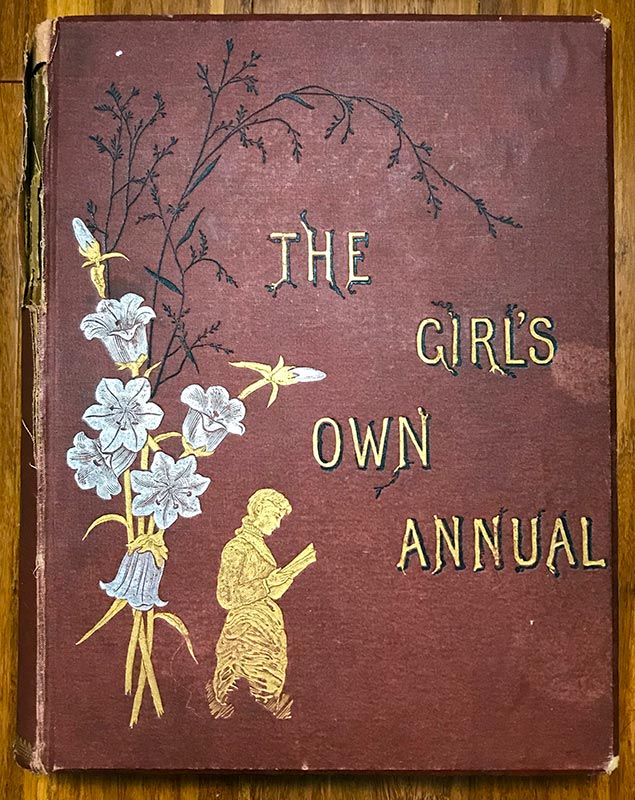As you might imagine, I buy a lot of old books and ephemera, mostly for the type and illustrations. Here I’ve got a bound volume of “The Girl’s Own Paper” for 1882. The “G.O.P.” was a periodical for young women, published in England from 1880 until the 1950s. Bound periodicals aren’t very valuable in general, but this one is also coming apart, and the insides are a little fragrant – not really a keeper. The content, though, is most interesting!
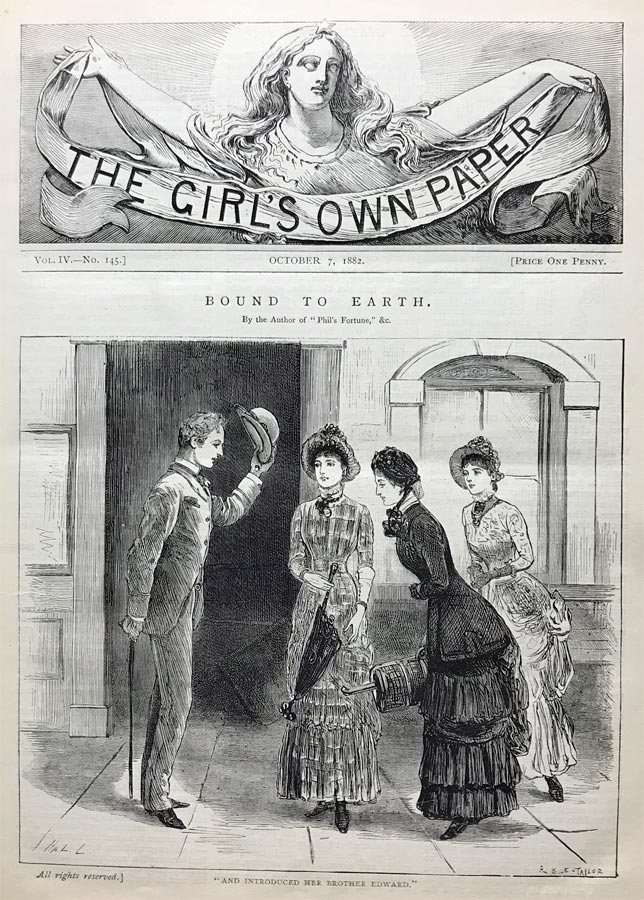
It’s what any Victorian matron would want to see in a wholesome girl’s magazine: serialized, sugary romances that showcase the proper behavior of young women and those who woo them. There’s also sheet music, recipes, housekeeping tips, needlework patterns, articles on health and beauty, etc. The paper was published by the “Religious Tract Society”, so there are Christian undertones, but it’s not overly preachy.
Some of the advice is pretty out there. Apparently, women were made from spun sugar, and fell apart without guidance and protection. Evidently they needed constant pruning and shaping, like a bonsai tree. In fact, the texts make it sound like most things are done to women, not by women. It’s fathers, mothers, husbands, teachers, governesses, mistresses, good taste, common sense, duty, and the rules of society that determine how and what a woman can be. I’d like to say that the past is an alien planet, but we all know much of this BS is still going on today.
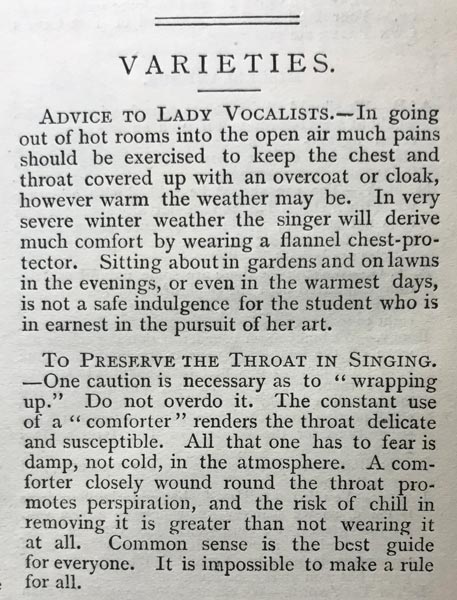
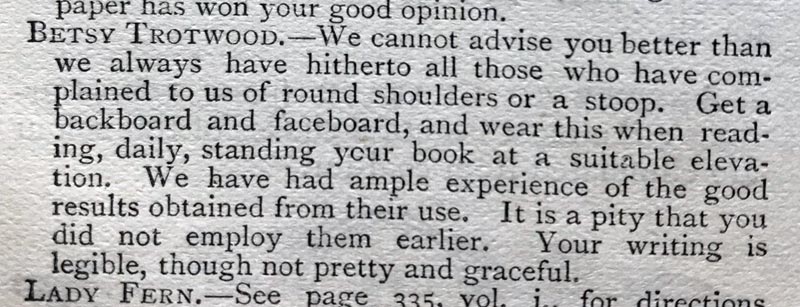
Thankfully, there are some progressive ideas, too. At least by the standards of the time.
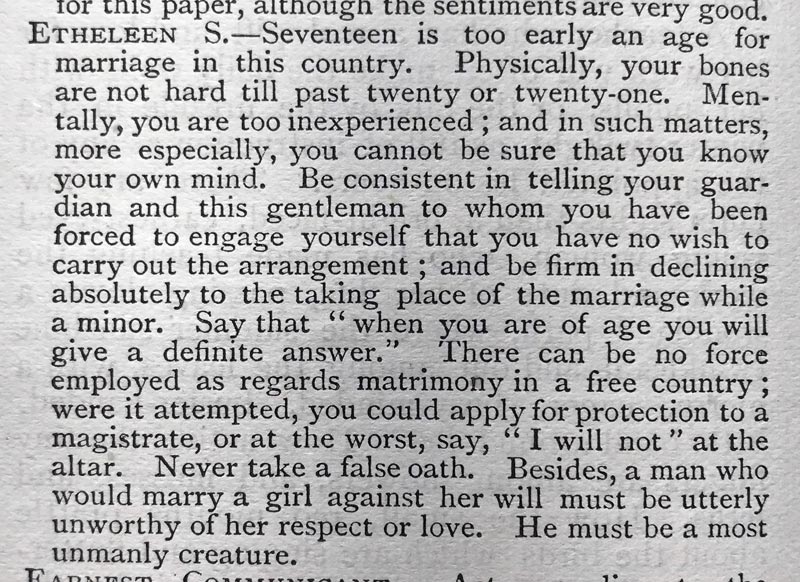
The most entertaining section comes at the end of each paper: several columns of tightly set print under the heading “Answers to Correspondents”. Here, the editors of the G.O.P. provide telegraphic answers to letters they’ve received. For privacy, many writers abbreviated their names, or used a pseudonym.
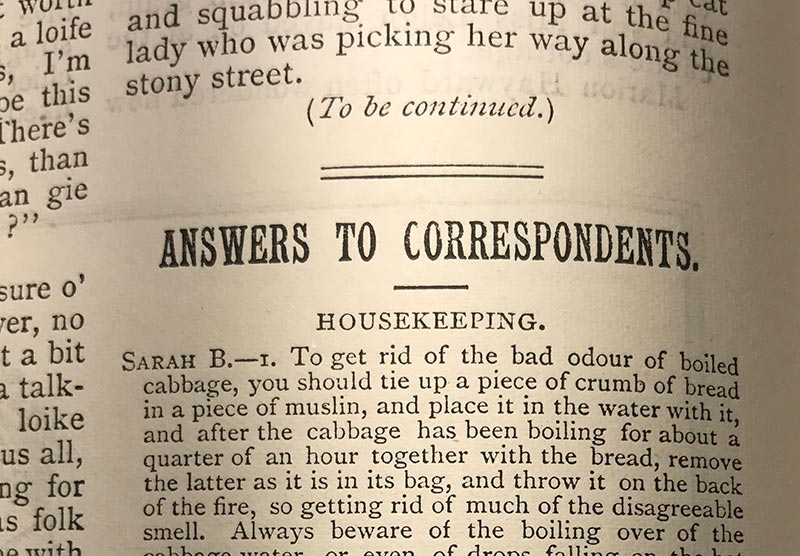
This is like hearing only one side of a phone conversation – we don’t know what the letter-writer asked, and some of the answers are pretty cryptic. I can see Victorian teenagers getting their kicks by imagining the shocking scenarios that might have led to responses like this one:

Much of the correspondence is about mundane matters, and the oh-so-important etiquette between men and women. I wonder if having rigid rules like this made things easier or harder for the socially anxious.
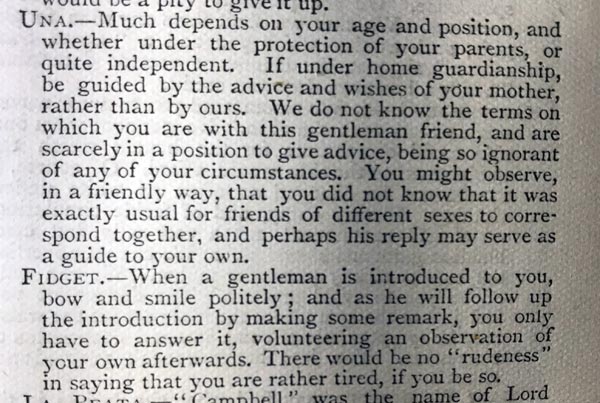
Sadly, it’s quite apparent that teenage angst and depression aren’t modern afflictions:

Correspondents were allowed to ask up to two unrelated questions per letter. These ones happen to be numbered, but sometimes there are startling non-sequiturs.

Good handwriting was very important to the editors. They comment on it. A lot.
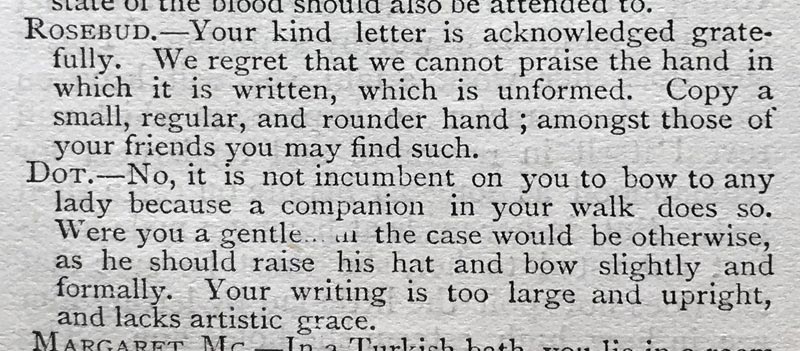


Which finally brings us to the sick burns! Someone sure got up on the wrong side of the bed!
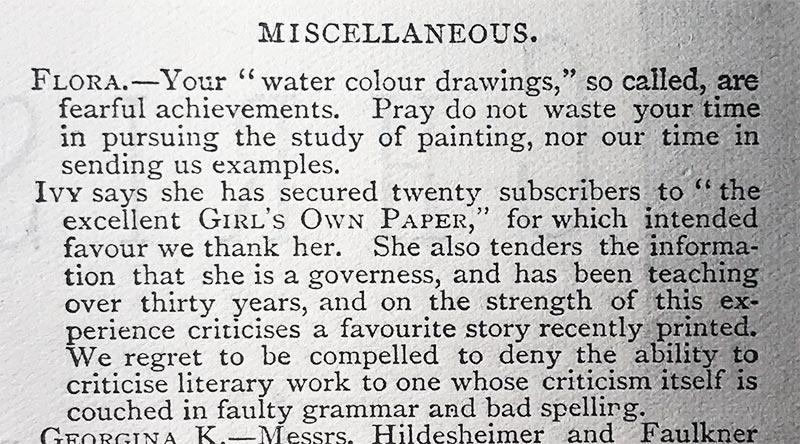
Ouch!

